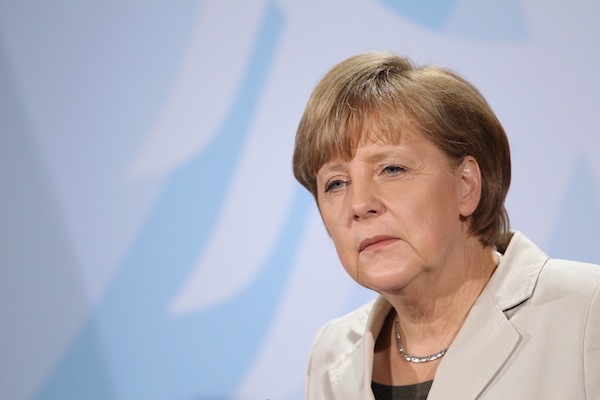The Eurozone crisis is teaching us plenty about how to recover from recessions. The nations that tried a debt-fuelled stimulus have found that their economies haven’t grown much, but they are saddled with the extra debt. The Swedes have cut taxes for the low paid, the Estonians took the fast route back to fiscal sanity — and both are now growing well, in spite of the turmoil that has engulfed their neighbours. But what’s less well-known is Germany’s record of reform, and how it has helped the country reach unemployment at a 20-year low.
Ten years ago, the German economy itself was pretty stagnant. When it first entered the euro, its low inflation meant that it faced the highest real interest rates in Europe. This stifled growth, increased social expenditure and hit tax revenues. It couldn’t play with interest rates anymore, as a Euro member, so it had no choice but to embark on structural economic reform. The aim was to improve competitiveness and labour market flexibility, to try to realise its great traditional strengths in technology and manufacturing.
Wage restraint was part of the solution, but so were tax cuts. Between 2000 and 2005, Germany cut corporation tax, and capital income tax. It relaxed employment protection by deregulating temporary and part-time employment, and drastically reduced benefits to the long-term unemployed to coax them back to the workplace. The Hartz reform packages, together with the controversial ‘Agenda 2010’, meant encouraging jobseekers to take low paid jobs. Dole conditions were tightened, and long-term training and direct job creation measures were cut back in favour of shorter programmes aimed to accelerate reintegration into the labour market.
There were simpler tax rates for the low-paid, supplemented by reforms to the existing labour market. For example, in 2004 small businesses with fewer than ten employees were made exempt from dismissal protection for employees. (This, by the way, is precisely what is being resisted in the UK following Beecroft’s recommendation).
Yes, it hurt. Yes, it worked. The benefits of these controversial changes can be seen in Germany’s recovery and strong export performance from 2005 onwards. It entered the crisis in comparatively good shape, and employment has recovered much more quickly since the crisis than in most other EU countries (helped, of course, of course, by an undervalued currency). While Germany was cutting regulation and employment laws, Gordon Brown was doing the exact opposite in Britain. The difference between the German and British approach to regulation is perhaps reflected in the unemployment chart below.

So what can we learn? That supply-side reform works, particularly when wide-ranging and well thought-through. Also that welfare reform must be delivered, with special emphasis placed on methods to get the long-term unemployed back to work. Britain has had one hell of a stimulus since the crash. The value of sterling has been reduced by a quarter, interest rates have been pegged at close to zero for three years, governments have pumped in over £500 billion of deficit spending, topped up by £325 billion of digitally created &”quantitative easing”. Despite all of this, the economy continues to flatline. Structural supply-side economic reform is a tough, gruelling task — but it works. Pouring borrowed or freshly-printed money into an unreformed economy is far less likely to be successful. It would be incredibly short-sighted to avoid labour market supply-side reforms at a time when our growth prospects look so dismal.
UPDATE: Liz Truss MP tweets that Germany has also overtaken the UK in women’s labour participation, as well as well leapfrogging us in the maths and science league tables.






Comments